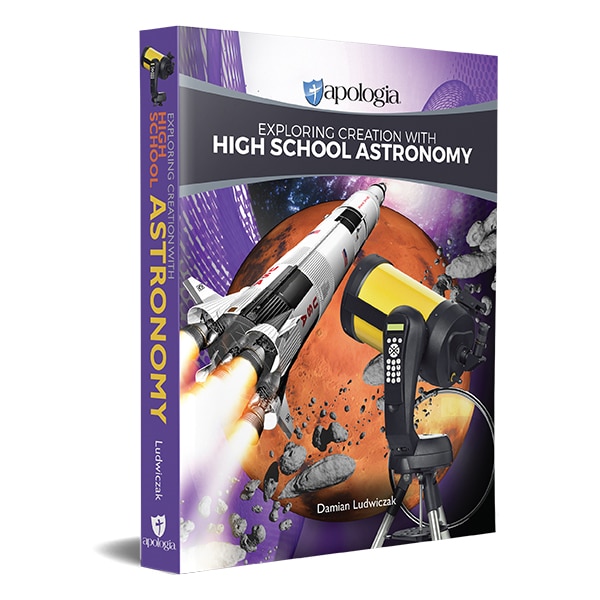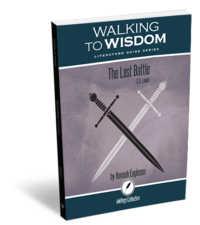Most people know that the Pilgrims came to America on a ship named the Mayflower, but not many people know just how difficult it was for the settlers to build the colony of Plymouth. The first winter was hard, and many Pilgrims died. But with the help of local Native American tribes, they hung on, clinging to their dream of a place where they could worship as they pleased. It took dedication and perseverance on the part of many people, but in the end, Plymouth stood strong.
Exploring Creation with High School Astronomy
$80.95
Product Description
Help your student understand the true vastness of all God’s creation with Apologia’s new high school elective course, Exploring Creation with High School Astronomy. This homeschool high school astronomy course travels through our universe making connections for students to contemplate without the pressure of exams that core science materials require.
This course was designed as an elective for high school students in 9th – 12th grades. All you need to complete this course is this All-in-One Student Textbook and Workbook. There is no separate Student Notebook. As there are no labs or exams with this course, it should not be used to replace biology, chemistry, or physics courses that are typically studied in the high school years. Rather, it was specifically written to expand a student’s knowledge of topics typically not taught in high school. As such, its easily read, conversational style can enhance a student’s high school studies without additional burden.
Prerequisite Information
There are no prerequisites for this course.
Some of the scientific reading is backed by the mathematical equations that support it. Within the text, the author works out every mathematical explanation in great detail so that the student can follow along without needing the actual math skills.
For students who are ready for the math, the author includes On Your Own comprehension questions. Detailed answers for all of the On Your Own Questions are provided in the back of the textbook so that students have all of the materials they need to succeed.
What’s Inside Exploring Creation with High School Astronomy
Exploring Creation with High School Astronomy has 14 modules.
The modules are ~25 pages long, on average. As there are no labs or exams, students are expected to read the text and complete the On Your Own questions to ensure they have comprehended the materials.
A student could easily finish the course in a semester, reading one module per week. This would be a 14-week course plan. However, it is also acceptable that a student would plan to read through a module every two weeks at his or her leisure. This would make a 28-week course.
Included in Each Module You Will Find:
- On Your Own questions to allow students to self-check their comprehension along with detailed answers
- “Universal Truths” section at the start of each module, which sets the tone for what students will learn in that module
- “Where Do We Go From Here” section to wrap up the lessons learned and see the path forward
- “Think About This” callout boxes that connect the textbook facts to real-life lessons
Topics Covered in This Homeschool High School Astronomy Course
Exploring Creation with High School Astronomy is a journey that starts with the mysteries of the universe.
What are space, matter, antimatter, cosmic rays, dark matter, dark energy, black holes, and wormholes? It goes back in time to investigate the history of astronomy. What did the early stargazers see and understand? How did technology advance what we see and investigate? How does that technology work? And how does this change our model of our solar system and our knowledge of the universe? It then investigates the science of our Sun, planets, and other astronomical objects that reside in our solar system, galaxy, and the universe. It ends with a lesson on celestial navigation, learned from stargazers long ago but still a valuable tool today.
Specific topics include:
- Space and Interstellar Space
- Normal Matter, Antimatter, and Dark Matter
- Black Holes and Wormholes
- The History of Astronomy
- Astronomical Measurement
- The Model of Our Solar System
- The Sun and The Electromagnetic Spectrum
- The Inner Planets
- Orbital Mechanics
- The Moon
- Types of Telescopes
- The Outer Planets
- Dwarf Planets and the Asteroid Belt
- Stars and Constellations
- Galaxies
- Celestial Navigation
How Should We Fit This Course Into My Student’s High School Science Plan?
There are many fascinating areas of study that students should have the opportunity to learn. Not everything needs to be a rigorous science course with labs and exams. Understanding our universe and the beauty of its design is one of those areas. Written in the same conversational tone as other Apologia science textbooks, but without the pressure of typical courses, this course should be gifted to the student to read at their own pace. Knowledge of the universe, how we currently understand it, and the questions of the unknown are all things that every human should endeavor to contemplate and comprehend.
Students can receive credit for completing Exploring Creation with High School Astronomy on a schedule that fits their busy lives. As there are no experiments or exams, students can read the conversational style text at their leisure. We recommend the course be completed within one year’s study.
Additional Information
| Weight | 2.5 kg |
|---|---|
| Dimensions | 11 × 9 × .6 in |
| ISBN 13 | 9781946506719 |
| Publisher | Apologia |
| Format | Hardcover |
| Grade | |
| Subject |





Reviews
There are no reviews yet.